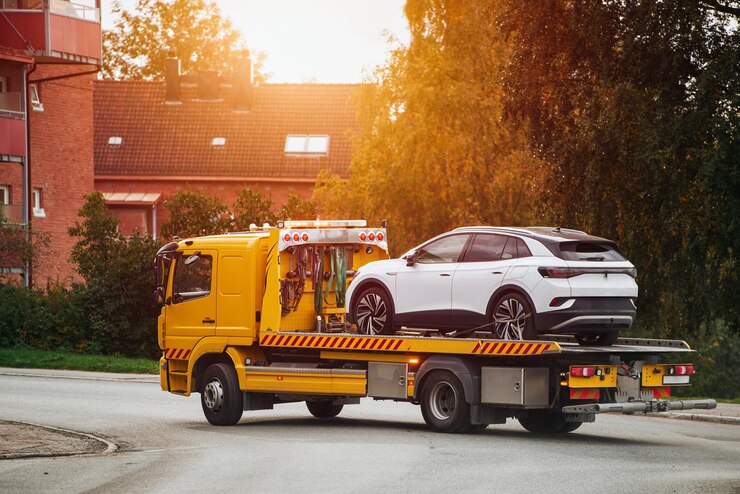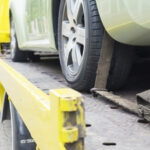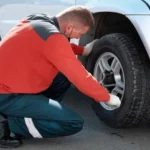How to Calculate the Towing Capacity of a Car?

If your car ever breaks down on the road or you need to pull another vehicle, it’s important to know how much your car can safely tow. Many people guess the number, but towing is something you should calculate properly. Understanding your vehicle towing limits is the key to avoiding damage and staying safe.
At CCA, we handle towing every day, so here’s a simple towing weight guide anyone can follow.
What is Towing Capacity?
Towing capacity is the maximum weight your car can pull without harming the engine, suspension, brakes or transmission. Every vehicle has a different limit, and it’s always better to stay on the safer side.
How to Calculate the Towing Capacity of a Car
You don’t need complicated formulas. Just check these four things:
1. GCWR (Gross Combined Weight Rating)
This is the total allowed weight of your car + the trailer + the load.
2. Curb Weight
This is your car’s weight without passengers or luggage.
3. The Simple Calculation
Towing Capacity = GCWR – Curb Weight
Example:
If GCWR is 4,000 kg and your car’s curb weight is 1,600 kg:
Towing capacity = 4,000 – 1,600 = 2,400 kg
This is a basic car towing capacity calculation, but it gives you a clear idea of what your car can safely pull.

What Affects a Car’s Towing Capacity?
Even if the numbers look good, the actual towing performance depends on:
1. Engine Power & Torque
Cars with higher torque handle towing better, especially on slopes.
2. Suspension Strength
A weak or soft suspension reduces towing stability.
3. Brake Quality
If your brakes are worn out, even a light trailer can be risky.
4. Tyres
Old or under-inflated tyres reduce the safe towing limit.
5. Weight Distribution
If the load is not balanced, the trailer may sway and pull the car sideways.
Best Way to Repair a Tubeless Puncture
- Locate the Puncture
Inspect the tyre visually or use soap water. When you use soap water on tyre bubbles will form where air leaks out. - Remove the Object
Use pliers to remove the nail, screw, or sharp object from the tyre that caused the puncture. - Clean the Hole
Insert the reamer tool into the puncture hole and twist it to clean and roughen the edges. This helps the repair strip stick better. - Insert the Rubber Strip
Take a rubber strip from the kit, thread it through the insertion tool, and push it firmly into the hole. Leave a small part of the strip outside. - Trim and Inflate
Cut the excess strip if needed, and use an air pump to inflate the tyre to its normal pressure. - Check for Leaks
Apply soap water again to confirm that no bubbles appear, this means your tubeless tyre patching is repaired.

General Towing Weight Guide
These are approximate safe ranges:
- Small cars: 400–700 kg
- Mid-size sedans: 700–1,200 kg
- Compact SUVs: 900–1,500 kg
- Full SUVs & pickup trucks: 1,500–3,000+ kg
Always check your vehicle’s manual for the exact figure. This guide is only for understanding.
Towing Safety Tips from CCA
Since we provide towing support every day, here are a few simple tips:
- Keep tyre pressure correct before towing
- Avoid sudden acceleration or braking
- Don’t overload the trailer
- Use the right towing hook or tow bar
- Drive slower than usual
- Take wider turns
- Stop and check the tow rope or chain in long-distance towing
If you ever feel the load is too heavy or unsafe, it’s better to call a professional towing service instead of taking risks.
Need Help? CCA Is Here for You
If your car ever breaks down or you need towing assistance, CCA 24×7 provides reliable, safe and quick towing support anywhere on the road. Whether your vehicle is stuck, overheated, punctured or completely non-moving, our team is ready to assist.
FAQ's
Towing capacity is the maximum weight your vehicle can safely pull without damaging the engine, brakes, or suspension.
Subtract your car’s curb weight from its GCWR.
Towing Capacity = GCWR – Curb Weight
Yes. Higher torque and power improve towing performance, especially on slopes or rough roads.
Absolutely. Worn or under-inflated tyres reduce towing stability and safety.
No. If the load seems unsafe or the car struggles, stop and call a professional towing service like CCA for help.




